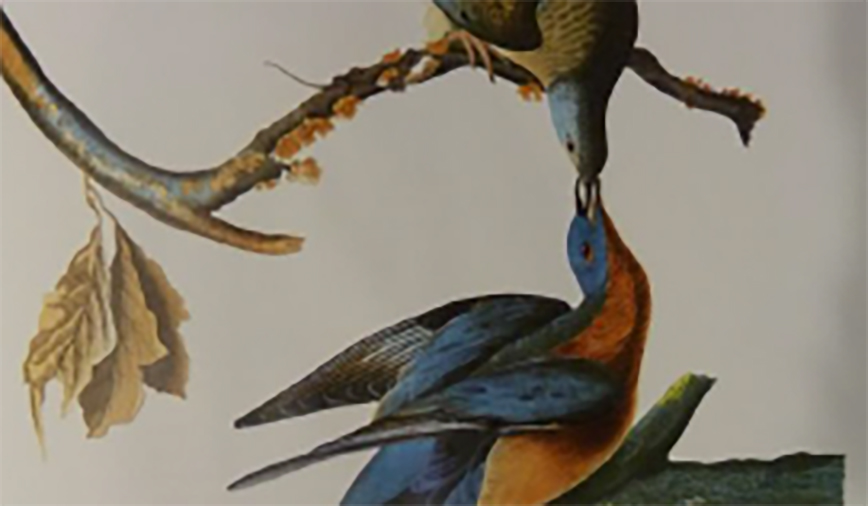“When we try to pick out anything by itself we find that it is bound fast, by a thousand invisible cords that cannot be broken, to everything in the universe.”
This John Muir quote—one that is in fact often misquoted—has been both a blessing and a curse for all naturalists who have come along since he first scrawled it in his personal journal in 1869.
The statement is a blessing because it justifies why naturalists do what we do. Working as interpreters of the natural world, our universal goal is to make people see that they, we, all of us together, cannot exist separately from the nature around us. Every action we take has a reaction, either positive or negative, among the plants, animals, fungi and other kingdoms of life among which we exist.
But it’s also a curse because, try as the naturalists do to educate, interpret and explain, most people just don’t get it.
The problem, as I see it, is that as humans we are handicapped by our own success. We live just about everywhere in the world, dominating every ecosystem, and boast lifespans of eight decades or more. We also tend to think pretty highly of ourselves, touting our complex brains and our abilities to use reason and logic to solve problems.
If we have an issue with nuisance plants or animals, we take steps to “get rid” of them and get on with our lives. If there are no immediate repercussions then, as far as we’re concerned, the problem is solved.
Except for one thing: Those thousand, invisible cords.
Life on this earth goes a lot deeper than just what we can see, all the way down to tiny but essential protozoa. Further complicating matters, those connections that bind everything together rarely reveal themselves to us, even over the space of a lifetime. Sometimes it takes several generations to realize just what we’ve done to our planet, and even more to figure out how to make it right again.
Wow. Those are some pretty deep thoughts, huh? Not the usual sort of banter you’d expect in a Good Natured column. What do you suppose got into my head this week?
This past Wednesday we had a visitor at Hickory Knolls, noted author Joel Greenberg. His latest book, A Feathered River Across the Sky: The Passenger Pigeon’s Flight to Extinction, documents how humans—over the course of about 30 years–managed to knock one of the most populous species on earth into absolute oblivion.
As Joel recounted to a crowd of about 60 people, no one alive today remembers the great clouds of passenger pigeons that would darken the skies and whitewash entire towns as they flew overhead. The birds’ legacy remains, though, in things like old family recipes (or “receipts”) for pigeon pie, and in names like Pigeon River and Pigeon Forge,TN.
So many birds, leaving so many messes…surely the people of the mid-1800s found it inconceivable that one day they would be gone. But sure enough, after enough shooting, netting and trapping had occurred, the world found itself down to one, lonely passenger pigeon: Martha. She died in a cage at the Cincinnati Zoo on September 1, 1914.
As Joel explained, we’ve now had 100 years to contemplate the passing of the passenger pigeon, and to deal with the consequences.
Which are….?
Pop quiz, people. Forget about the thousand invisible cords. Try to come up with just one way your life today is affected by the loss of Ectopistes migratorius.
Can’t do it?
Well, neither could I. So I asked Joel. His answer—which he freely admits is based on guesswork, since no one ever studied passenger pigeons while they were alive—may surprise you.
Lyme disease.
Passenger pigeons, it turns out, were great consumers of mast—the fruit of forest trees like beech, oak and hickory. When a flock of several million or even a billion birds flew in, in clouds that stretched for miles, they would consume much of the mast, leaving very little for other woodland creatures. Like Peromyscus leucopus, the white-footed mouse.
When those great flocks of birds quit showing up, those mice found themselves with a newly abundant food source. Over time, it is speculated, their populations grew to the large numbers we now have today.
White-footed mice are a key host in the life cycle of Ixodes scapularis, the black-legged, or deer, tick. And deer ticks, we’ve come to learn, are important vectors of the Lyme disease.
Eliminate a species and, 100 years later, we have an illness that has affected over 200,000 people in the eastern United States in the last 10 years alone, according to data from the Centers for Disease Control and Prevention.
This is just one example of one connection, of one extinct species to one still living. That leaves 999 other invisible cords yet to be discovered.
Multiply those 999 times 8.7 million—the number of species estimated to be living today—and factor in that 99.9% of all species that ever existed on earth have already gone extinct, and you’ll see that there are trillions of connections, for better or for worse, yet to be made.
It’s a lot to think about, a curse even, especially for those of us who are bad at math. But if just one more person starts to understand they cannot live apart from the great natural world around us, this naturalist will feel blessed.
Pam Otto is the manager of nature programs and interpretive services at the Hickory Knolls Discovery Center, a facility of the St. Charles Park District. She can be reached at 630-513-4346 or potto@stcparks.org.

